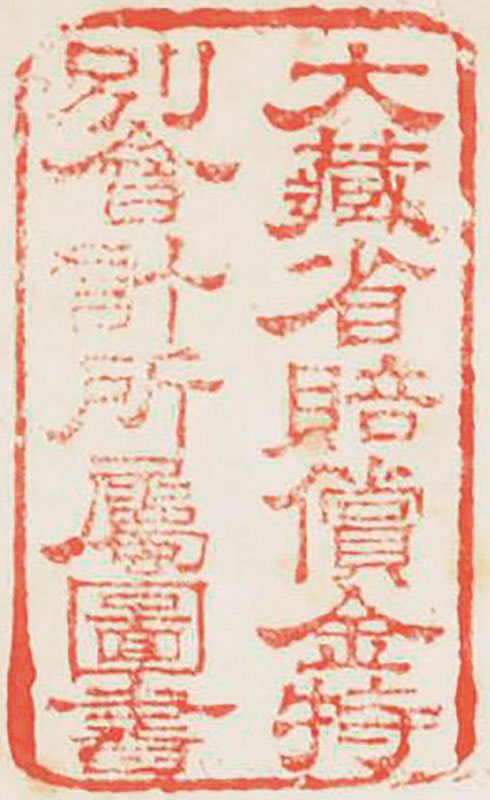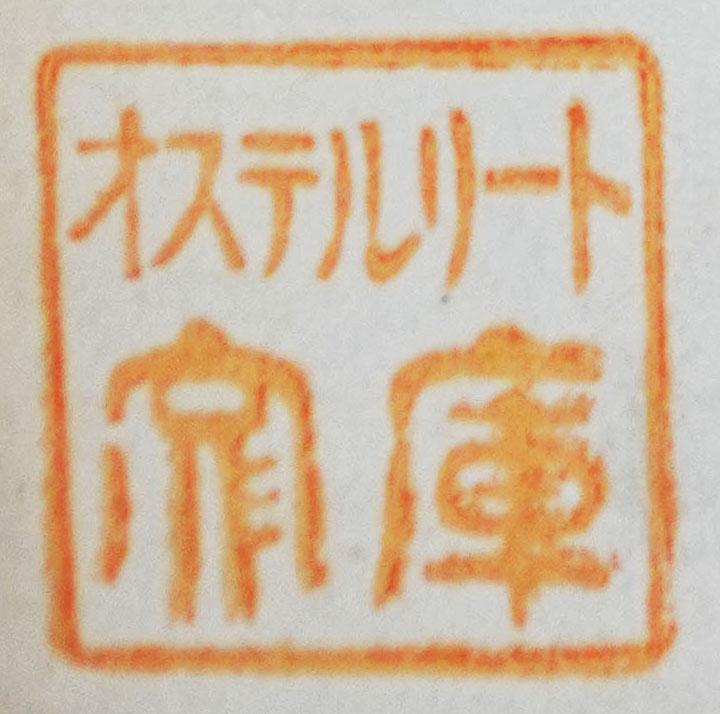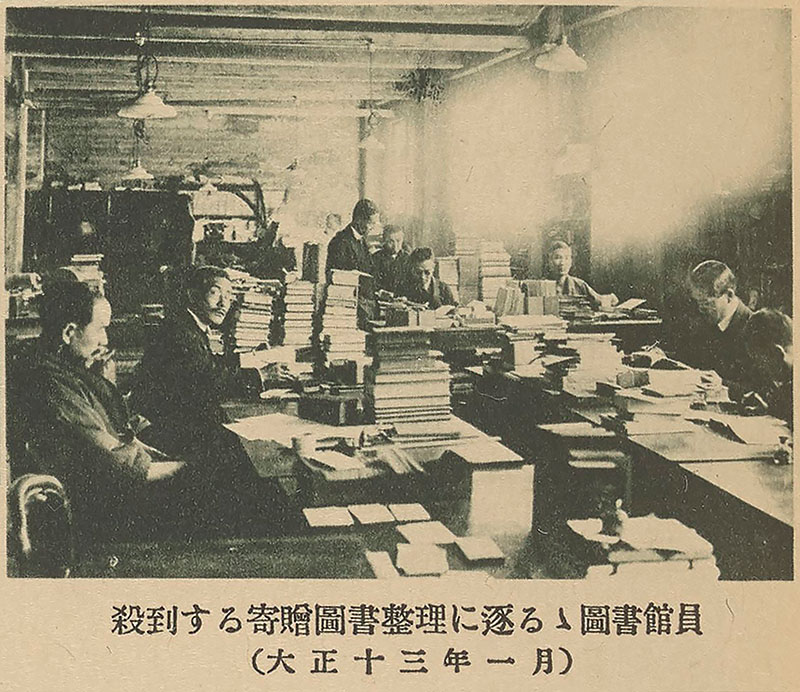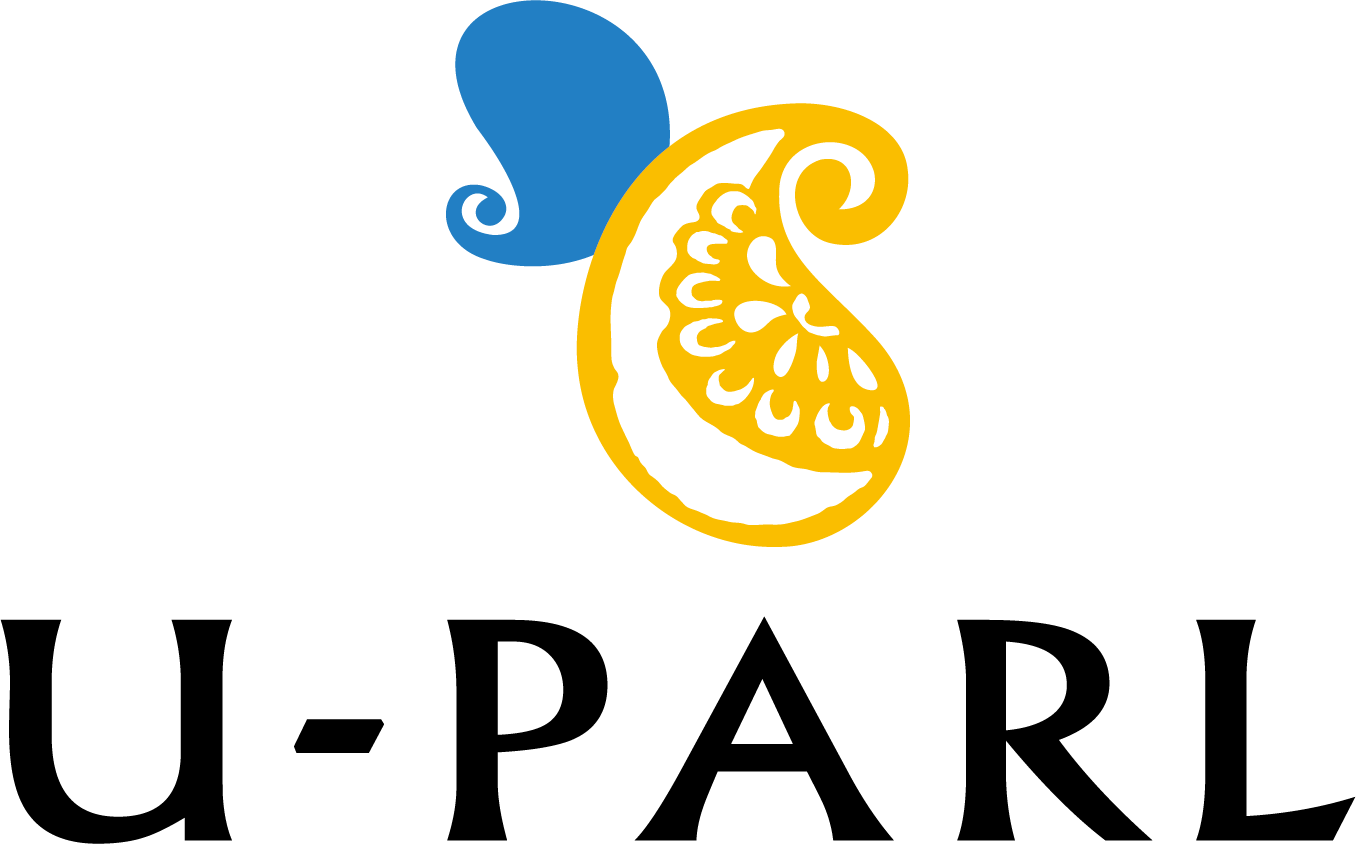TAKAYAMA Wakako, ARAKI Tatsuo
What Does “Books Pertaining to Department of Finance Special Account for Reparations” Mean?
Denkmaeler aus Aegypten und Aethiopien(1) in the possession of the University of Tokyo bears an affixed red seal stating “Books Pertaining to Department of Finance Special Account for Reparations.” What kind of materials bear this seal? When and how did they come into the possession of the University of Tokyo? How many of them exist? As far as we can ascertain, there are no more or less comprehensive sources that could give an answer to such questions. This paper presents a report of a primary investigation of the topic.

In June 1919, according to the Treaty of Versailles, Germany, as a defeated country in World War I, was obliged to pay reparations to the victorious states. As Japan also acquired rights to a part of the reparations, in August 1920, the Special Account for Reparations Law was promulgated and the Special Account for Reparations was established, whose management was entrusted to the Reparations Items Processing Committee (hereinafter referred to as “the Committee”).
Quite soon, Germany, left under the burden of such a tremendous debt, failed to meet its reparation obligations, and in 1924, a new schedule for payment of war reparations, the so-called Dawes Plan, was enacted through the mediation of the US. The amount of reparations to be paid by Germany was defined per each one-year period, creditor states were entitled to receive the Dawes Plan annuities (hereinafter referred to as “annual payments”) allotted to them out of that amount, and the first one-year period was defined from September 1, 1924 to August 31 of the next year.
Although the “annual payments” would originally imply payments in money, much of the reparations to Japan were paid in kind according to the allotted money amount. Department of Finance materials attest to what types of items Japan requested. For the first and second one-year periods, Japan mainly received dyes, cars, etc. However, as there still was a remaining balance in the account, the Committee at its 15th meeting in July 1926(2) decided to accept requests from government agencies, Tokyo Imperial University, and Kyoto Imperial University to purchase German books and supply them to the corresponding institutions to be kept there at no charge. That was the beginning of the “Books Pertaining to Department of Finance Special Account for Reparations” (hereinafter referred to as “reparations books”).
In line with such policy, the Committee at its 17th meeting(3) decided to purchase the Osterrieth Collection (Albert Osterrieth, 1865–1926) mainly consisting of materials on industrial property rights and intellectual property rights. At the 18th meeting held in the following year (1927)(4), the Committee decided to purchase the Roethe Collection focused on the German language and literature that the Tokyo Imperial University was so eager to acquire. But, to great disappointment, it appeared to have been already sold to another party(5). Furthermore, at the 21st meeting in May of the same year(6), the Committee ruled, following a request from KOZAI Yoshinao, the president of the Tokyo Imperial University, to purchase the Preuß Collection (Hugo Preuß, 1860–1925) comprising publications on public law, administrative law, and politics.
At that meeting, considering that there had been requests filed from other Imperial universities as well, the Committee decided to, starting from the next time, allocate a budget for purchasing books for Tohoku, Kyushu, Hokkaido, and Keijo Imperial Universities, with Taihoku Imperial University later added to the list as well(7).
Documents That Refer to Reparations Books and Related Studies
Currently, users of the OPAC system of the University of Tokyo cannot search information by the seal of “reparations book.” The most important source for research on the reparations books that the authors managed to find is Doitsu baishokin konyu tosho mokuroku [Catalogs of Books Purchased Through German Reparations](8) (hereinafter referred to as “German books catalogs”) believed to be compiled by the University Library. We confirmed the existence of the first to fourth catalogs, which indicates that the reparations books were acquired by the library separately in several stages.
Denkmaeler aus Aegypten und Aethiopien, mentioned in the beginning of this paper, is included in the first catalog. Based on the fact that it was registered in the library in July 1932, other materials recorded in this catalog were probably acquired around that time as well.
The second catalog has an inscription reading “Puroisu bunko [Preuß Collection]” on its cover. This collection is kept at the Graduate Schools for Law and Politics/Faculty of Law Library and is currently also available for search in the OPAC system.
The third catalog bears a pencil-written inscription in Japanese reading “Ribaaman bunko [Liebermann Collection]” on its cover. Today, the Liebermann Collection is registered and available for search in the University of Tokyo OPAC system. The Liebermann Collection (Felix Liebermann, 1851–1925, historian) mainly consists of historical materials on the English law system and was studied by ARIMITSU Hideyuki(9). Arimitsu states that his study was carried out based on a catalog of 1937. The University of Tokyo Library System currently has in its possession a catalog titled Dainiji tokyo teidai kankei tosho mokuroku: dozu daiyonendo nenjikin ni yori konyu no bun [Second Catalog of Books Related to Imperial University of Tokyo: Materials Purchased Through the Fourth Dawes Annuity] with an attached note dated 1937 by the person in charge of acquisition (named Kubo). This must be the catalog that Arimitsu used for his research. Arimitsu reports to have found, in the process of his investigation based on this catalog, about 100 pieces currently not registered in OPAC as part of the Liebermann Collection.
There are slight differences between this catalog and the third one mentioned above. The reason why the two catalogs bear different numbers is unknown and requires further examination, but both ones undoubtedly are related to the Liebermann Collection purchased through the fourth annual payment (for the period of September 1, 1927 to August 31, 1928). This means that about 10 years had passed after the purchase request was made before the collection was finally registered. As for the Fourth Catalog, unlike the ones above, no clues have been found so far with regard to the name(s) of the corresponding collection(s) or time of acquisition.
Location of Reparations Books

Based on the information from the German books catalogs, the authors examined the actual materials mainly housed in the General Library and confirmed the existence of more than 100 pieces that bear the “reparations books” seal. They were not kept as a separate corpus of “reparations books,” but mixed with other materials accepted after the Great Kanto Earthquake. The reparations books confirmed by the authors can be roughly divided into the following four groups: “Osterrieth Collection,” “Preuß Collection,” “Liebermann Collection,” and materials acquired separately, not pertaining to any collection.
The Osterrieth Collection is not registered in OPAC as a collection; however, quite a few materials feature the “Osterrieth Collection” seal. In the process of our investigation, we managed to confirm the existence of about 50 items related to this collection; some of them bear both the “reparations books” and “Osterrieth Collection” seals, others have only the collection seal, and there also are some items that, while having only the “reparations books” seal, can be estimated as belonging to this collection. The collection was supposed to be purchased as reference for the revision of the Copyright Act and, as of March 1927, was planned to be divided between the Department of Commerce and Industry and the Department of Interior(10). Such questions as what materials out of the entire collection, how and why they ended up in the possession of the University of Tokyo, as well as why they were not treated as one collection shall be addressed in future research.

There are a lot of unclear points regarding the materials that do not belong to any collection as well. Auction catalogs of German bookshops sent by the Consul General in Hamburg to the Minister for Foreign Affairs in October and November, 1927(11), indicate that attempts were made to collect publications on orientology. The details of their purchase and correlation with the materials not pertaining to any collection also require further investigation.
Conclusion
Although this paper marks only the beginning stage in the research on reparations books whose number is estimated to reach around 20 thousand, we can definitely conclude that the reparations books in the University of Tokyo are not yet fully systematized. However, this issue does not concern exclusively the reparations books.
Almost all books in the possession of the University Library were lost to fire due to the Great Kanto Earthquake of 1923. Later, vigorous efforts were directed toward acquiring books to restore the library, huge donations including the Ogai Collection were received both in Japan and from abroad, and new materials were also actively purchased through the Library Restoration Fund(12). According to DEGUCHI Tomoyuki, the materials within the Ogai Collection, acquisition of which began in 1924, initially were not housed in one place all together, but arranged based on the library classification just like other materials(13). Reparations books must have also been acquired with great enthusiasm in the course of restoration after the devastating earthquake. And it is easy to imagine that the library staff might have intended to catalog and provide books from collections to users according to the existing classification, treating them the same way as all other holdings. The Ogai Collection was properly systematized only in 2009 following its complete survey(14). On the other hand, the Osterrieth Collection and other collections still wait to be properly arranged.
After-Earthquake Restoration was an important project that laid the basis for the present library holdings in the University of Tokyo Library System. Therefore, such questions as when, who, with what purpose, and how they built up the library collection requires further exploration and clarification.
[Reference List]
(1) Included in the Asian Research Library Digital Collections of the University of Tokyo. Lepsius, R. [1849-1859]. Denkmaeler aus Aegypten und Aethiopien nach den Zeichnungen der von Seiner Majestaet dem Koenige von Preussen Friedrich Wilhelm IV nach diesen Laendern gesendeten und in den Jahren 1842-1845 ausgefuehrten wissenschaftlichen Expedition, auf Befehl seiner Majestaet. Berlin: Nicolaische Buchhandlung. Housed in General Library, Call number BG:222:1-2.
(2) Baisho bukken shori iinkai ikken (bunkatsu 3) [Reparations Items Processing Committee Case File (Part 3)] (in the possession of Diplomatic Archives of the Ministry of Foreign Affairs of Japan), JACAR (Japan Center for Asian Historical Records) Ref.B06150491500(2-3-1-0-151), p. 298.
(3) Ibid. (Part 4), JACAR (Japan Center for Asian Historical Records) Ref.B06150491600(2-3-1-0-151), p. 347.
(4) Oshutaisen ni yoru baisho kankei zakken/baisho bukken shori iinkai kankei (bunkatsu 1) [Miscellaneous Matters Related to Great European War Reparations/Matters Related to Reparations Items Processing Committee (Part 1)] (in the possession of Diplomatic Archives of the Ministry of Foreign Affairs of Japan), JACAR (Japan Center for Asian Historical Records) Ref.B04013877500(B-8-0-0-1_2), pp. 6-7.
(5) Department of Finance (Ed.) Meiji taisho zaiseishi dai 20 kan zassan [Financial History of Meiji and Taisho Periods, Vol.20, Miscellaneous]. Tokyo: Zaisei keizai gakkai, August 1939. p. 151
(6) Material referenced in Note (4) above, p. 23
(7) Material referenced in Note (4) above, p. 29 and p. 101
(8) Doitsu baishokin konyu tosho mokuroku [Catalogs of Books Purchased Through German Reparations]. Tokyo: University of Tokyo Library. 1900s. Bound volume combining Dai ichiji doitsu baishokin konyu tosho mokuroku [The First Catalog of Books Purchased Through German Reparations], Dai niji doitsu baishokin konyu tosho mokuroku (puroisu bunko) [The Second Catalog of Books Purchased Through German Reparations (Preuß Collection)], Dai sanji doitsu baishokin konyu tosho mokuroku (riberuman bunko) [The Third Catalog of Books Purchased Through German Reparations (Liebermann Collection)], and Dai yoji doitsu baishokin konyu tosho mokuroku [The Fourth Catalog of Books Purchased Through German Reparations]. In addition, there are also Dainiji tokyo teidai kankei tosho mokuroku: dosu daiyonendo nenjikin ni yori konyu no bun [Second Edition Catalog of Books Related to Imperial University of Tokyo: Materials Purchased Through the Fourth Dawes Annuity], alternative title: Riberuman bunko mokuroku [Liebermann Collection Catalog] (Tokyo: Tokyo Imperial University Library, 1900s), Puroisu bunko mokuroku [Preuß Collection Catalog] (Tokyo: Graduate Schools for Law and Politics/Faculty of Law of the Tokyo Imperial University, 1900s, typed material). Furthermore, there are also surveys and various catalogs of donations that indicate that the University of Tokyo houses “Books Donated by German Government.” However, they cannot be searched in OPAC even by these keywords. See: National Diet Library General Reference Division/Acquisitions and Cataloging Division (Ed.). Zenkoku tokushu korekushon yoran [Handbook of National Specific Collections] (Tokyo: National Diet Library, March 1957), p. 43, Hiroshima University Library ed. Zenkoku kokuritsu daigaku shozo kichotosho mokuroku: fu: bunko/shusho ichiran kichotosho shitei kijun [Catalog of Rare Books Housed in State Universities throughout Japan: ATCH.: List of Collections/Archives, Rare Books Designation Criteria] (Hiroshima: Hiroshima University Library, March 1973), pp. 254-255, etc.
(9) ARIMITSU Hideyuki, Ribaaman bunko kenkyu [Study on the library of Felix Liebermann] (2010-2012 Grants-in-Aid for Scientific Research Report on the Research Achievements, Grant number: 22520730).
(10) Teikoku gikai shugiin iinkai giroku [Records of Proceedings of Committee Meetings of the House of Representatives of the Imperial Diet] No. 52, 53, 55, 56, 58, 59, 62-65, 67. (Tokyo: House of Representatives Secretariat, 1926-1935). Shuppanbutsu hoan iinkai giroku [Records of Proceedings of Publications and Bills Committee Meetings] No. 8, March 14, 1927. p. 6
(11) Oshu taisen kankei “dozu” nenjikin bunpai ni kansuru kyotei kankei ikken/kyotei jisshi kankei/nenjikin bunpai kankei/shoseki bunpai kankei 1.Toyo kankei sankosho mokuroku kankei bunkatsu 1 [File on Matters Related to Agreement Regarding the Distribution of the Dawes Annuities/Matters Related to Agreement Implementation/Matters Related to Distribution of Annuities/Matters Related to Distribution of Books 1. Matters Related to Catalogs of Orient Related Books. Part 1] (in the possession of Diplomatic Archives of the Ministry of Foreign Affairs of Japan), JACAR (Japan Center for Asian Historical Records) Ref.B04013921800(B-8-2-0-7_1_1_2)
(12) Tokyo teikoku daigaku fuzoku toshokan fukko cho: taisho 12 nen yori showa 4 nen ni wataru fukko cho hokoku oyobi zumen [ Tokyo Imperial University Library Restoration Commemorative Book: Reports and Drawings of Restoration from 1923 till 1929]. Tokyo: Tokyo Imperial University Library, March 1930. University of Tokyo General Library’s History Collection: https://iiif.dl.itc.u-tokyo.ac.jp/repo/s/kanshi/document/02cdad9a-6f99-43c8-5f00-e5149da92851, pp. 7-14.
(13) The University of Tokyo Library Collection Exhibition Committee (Ed.). Reiwa 4nendo tokyo daigaku fuzoku toshokan tokubetsu tenji “teebesu hyakumon no danmenzu — botsugo 100 nen kinen mori ogai kyuzoshoten” kinen koenkai kiroku: teebesu no iraka — ogai bunko no shin’o kara [2022 Special Exhibition at the University of Tokyo Library “Cross-section of the Hundred Gates of Thebes. Exhibition of books from the former collection of Ogai Mori, in commemoration of the 100th anniversary of his death. Commemorative Lecture Record: Tiled Roofs of Thebes ― From the Depths of the Ogai Collection], Lecturer: Associate Professor Tomoyuki Deguchi of the Graduate School of Arts and Sciences of the University of Tokyo. Tokyo: University of Tokyo Library System, December 2022. pp. 4-5.
(14) Same as note (13) above
[Fig. 1] Reprinted from the back of the cover of the material cited in Note (1) above.
[Fig. 2] Reitzenbaum, Selmar. (1909). Important decisions regarding the working of German patents, as well as literal translations of the German patent law, of the act for the protection of gebrauchsmuster (German utility model patent), and of the German law for the protection of trademarks, together with German technical phraseology (in parentheses) of German patent rule and practice. London: Asher. Housed in General Library, Call number L170:118, [Title Page]
[Fig. 3] Reprinted from the material cited in Note (12), “(6) Kari toshokan [(6) Temporary Library].”
*This is an English translation of a Japanese article from the “Catalog of the University of Tokyo Asian Research Library DigitalCollections 2017-2023” published on February 29, 2024.
For more information about the catalog, please click here.
March 27, 2024

